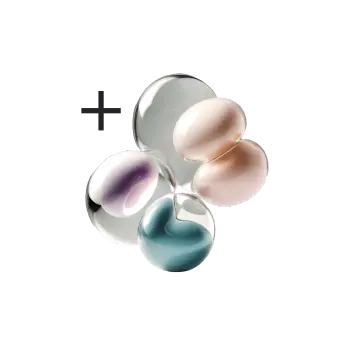By using the calculator, you get the ratio between progesterone and estradiol, which can be used to estimate your hormonal profile. The calculation of progesterone and estradiol is important for assessing the hormonal balance of a woman. This balance is crucial for various aspects of women's health, including reproduction, mood, and overall well-being. Here are some reasons why this calculation is significant:
Identifying hormonal imbalances: The ratio between progesterone and estrogenhelps to detect hormonal imbalances such as estrogen dominance, which can lead to PMS, irregular menstruation, and fibroids.
Fertility and pregnancy planning: Optimal hormonal balance is essential for conception and pregnancy. Progesterone and estradiol play key roles in this stage, from ovulation to implantation.
Treatment adjustment: The ratio can also be used as a basis to possibly adapt or adjust treatments like IVF, optimizing the chances for pregnancy.
Overall well-being: Hormonal balance affects various health aspects, such as mood and bone strength. The right balance can reduce mood swings and support general well-being. It's important to know that your hormonal values are highly individual, and the result can not always be used as a single parameter to identify your hormonal balance.
What should the normal balance between progesterone and estrogen look like?
Progesterone is at its highest during the later half of the menstrual cycle, that is, after ovulation and before the next menstruation. Then, progesterone levels should normally be between 200 to 400 times higher than estradiol.
Can one calculate if suffering from hormonal imbalance?
Yes, an estimate is possible. First, you need to take a blood test for progesterone and estradiol, recommended sampling is about 7 days after ovulation, which occurs around day 20 in a 28-day menstrual cycle. Then you enter your values in the calculator to calculate the ratio.
How do I interpret the result?
Test results for estradiol and progesterone are reported in different units: nmol/L and pmol/L. Note that different laboratories may vary, so this is a general guideline.
The reference range for progesterone during the luteal phase for fertile women varies between 10 - 90 nmol/L, while estradiol (E2) lies in the range of 120 - 800 pmol/L. To maintain a healthy hormonal balance, the ratio between progesterone and estradiol should be between 100 and 500. A ratio above this range may indicate progesterone dominance, while a lower value may suggest estrogen dominance.
Progesterone dominance
A calculated result above 500 indicates possible progesterone dominance.
Estrogen dominance
A calculated result below 100 indicates possible estrogen dominance.
Research shows that women with a high estradiol/progesterone ratio at the time of ovulation induction have higher chances for clinical pregnancy, confirmed through positive pregnancy tests and cardiac activity in ultrasound. These women also show a higher number of oocytes, thicker endometrium, and higher implantation rate.

























